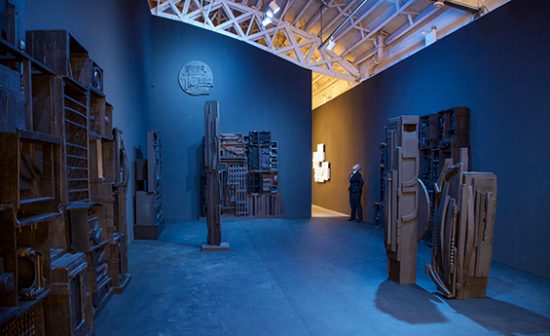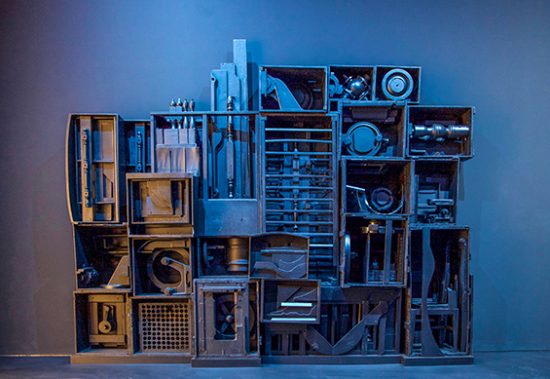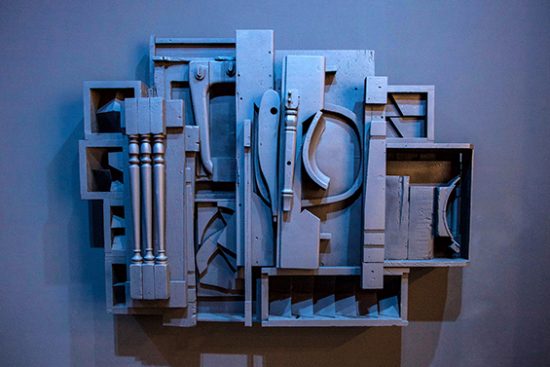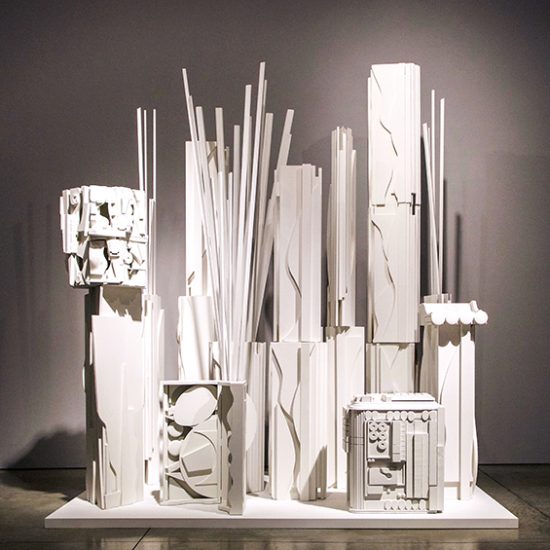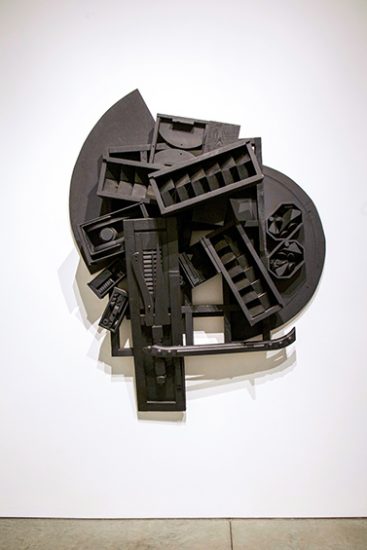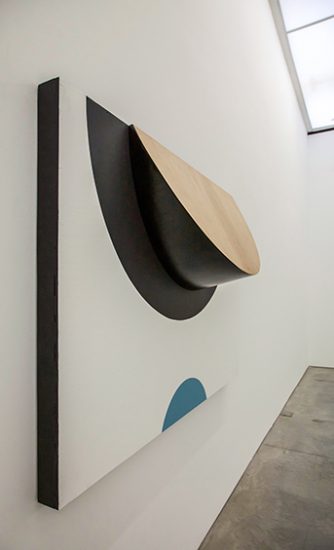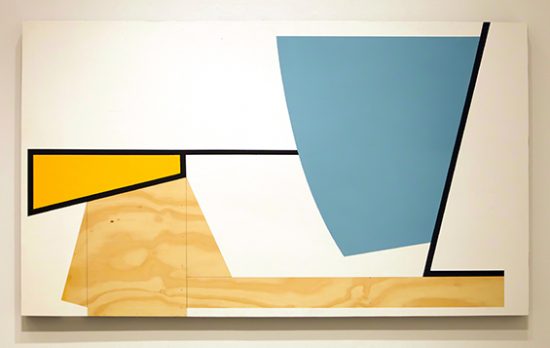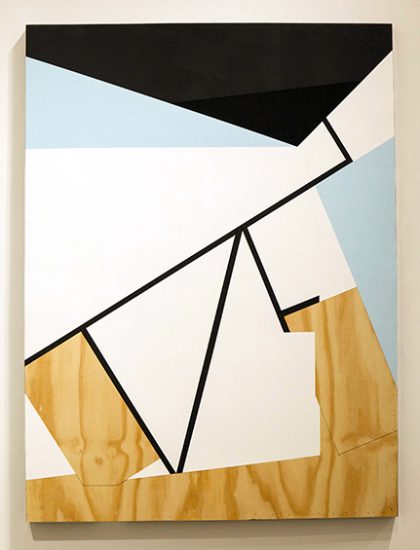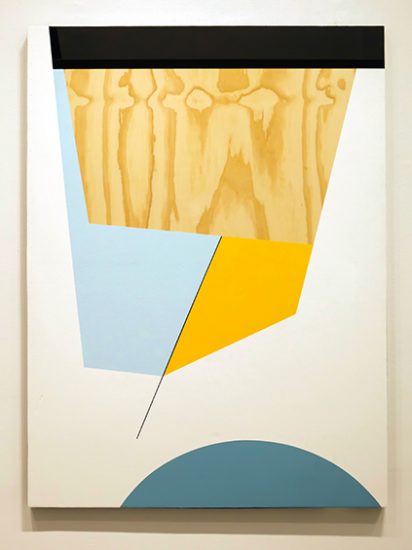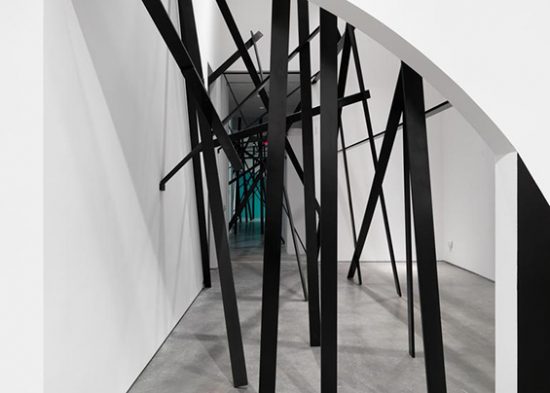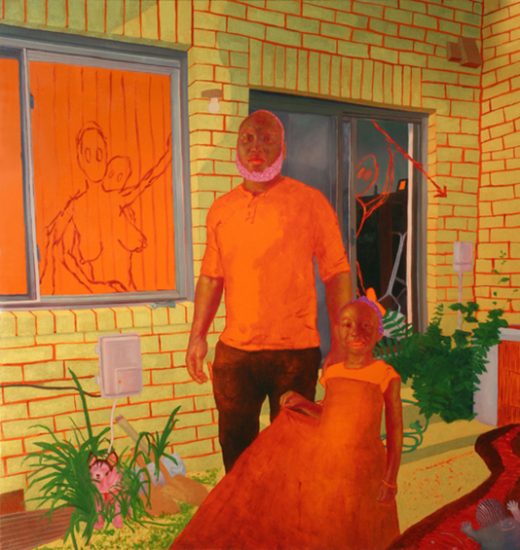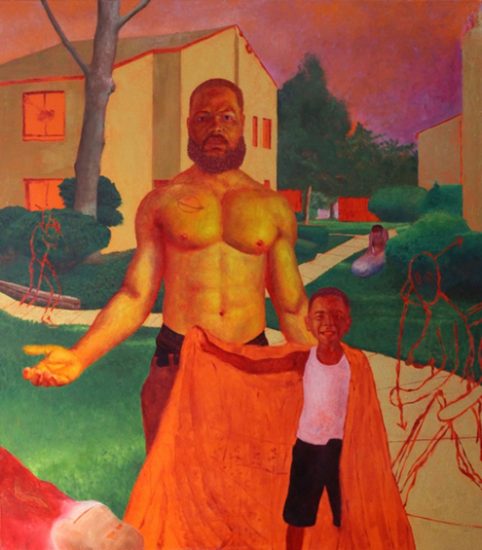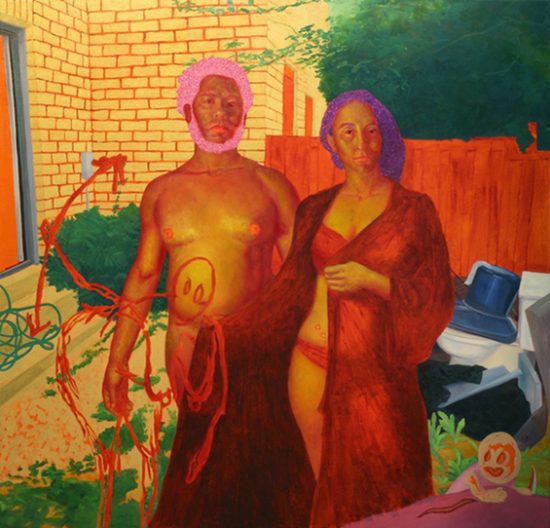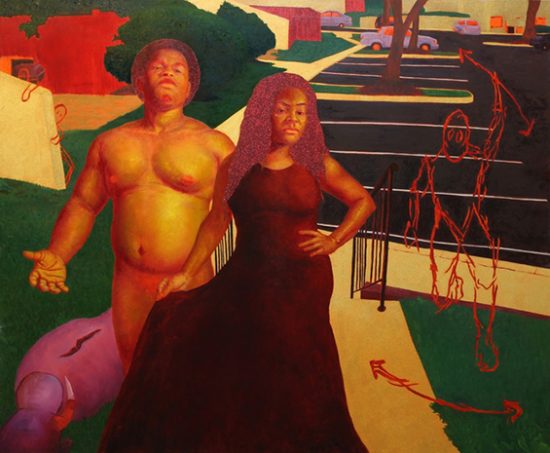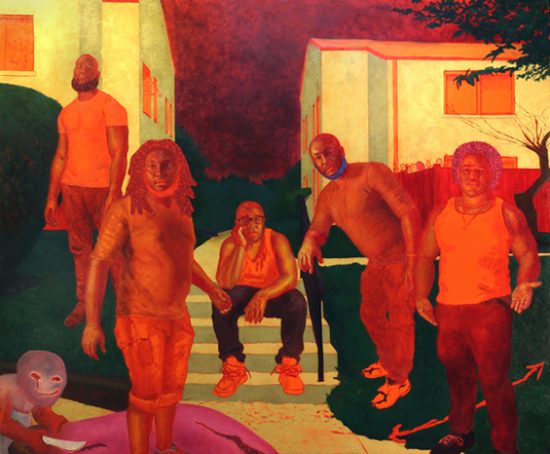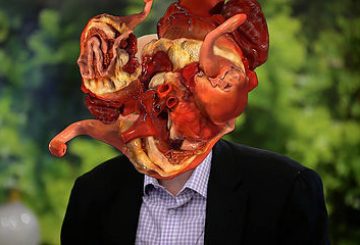George Shaw shows appropriate respect in the presence of the greats…
Louise Nevelson (installation view)
Louise Nevelson, Black and White
Louise Nevelson, Black and White
Louise Nevelson, Black and White
Louise Nevelson, Black and White
There are twenty iconic Louise Nevelson wood sculptures, wall reliefs, and installations displayed across three large rooms at the Pace gallery for the Black and White exhibition of works dating from the late 1950s to the late 80s. The main room of large black sculptures is painted black and lit minimally in blue following Nevelson’s installation specs. Appearing like boho altars painted the same deep black as Nevelson’s signature wide-brush eyelashes, the large floor sculptures while beautiful, can also exude a sinister air as they rest silently in the dark.
Serge Alain Nitegeka, Form Ephemeral IV, 2017
Serge Alain Nitegeka, Colour & Form XXXVII, 2017
Serge Alain Nitegeka, Colour & Form XXXV, 2017
Serge Alain Nitegeka, Colour & Form XLIX, 2017
Serge Alain Nitegeka, (Installation view)
The paintings on unprimed plywood look jazzy in canary yellow, fire engine red, and swimming pool blue, some augmented by panels and shapes distorting depth perception. Showing in two adjacent Boesky East galleries, Serge Alain Nitegeka also created an interactive installation in a corridor joining the two spaces. According to Nitegeka, a forced migrant from Burundi, “I want the viewer to physically experience what it feels like to be forced to move in a particular way.” Once you traverse the obstacle course, you find more seductive sculpture and painting hybrids.
Arcmanoro Niles, The Prize, 2017
Arcmanoro Niles, The Gift of the Offspring, 2017
Arcmanoro Niles, Stipulations of Love, 2017
Arcmanoro Niles, What Time Had Done, 2017
Arcmanoro Niles, When We Played As Kids, 2017
It’s not so much psychedelic as surreal: rich, lurid orange hues, glittered hair, and spectral figures in wispy lashes of red. Arcmanoro Niles’exhibition Revisiting the Area at the Rachel Uffner Gallery is a tour of memories about childhood mischief, as well as big life decisions. The subjects are family and friends posed to relive the amalgam of fiction and reality that creates distant recollections. While the setting is quotidian and the participants familiar, Niles imbues his characters with a saturated orange glow of optimism, and a palpably inquisitive affection.
